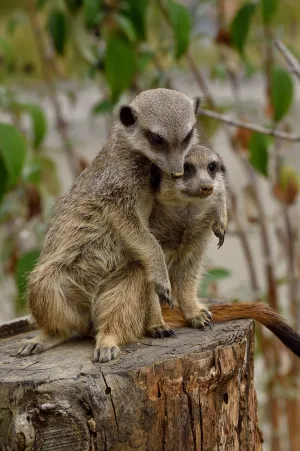
Mammal
The giant anteater
Myrmecophaga tridactyla
The giant anteater, Myrmecophaga tridactyla, is a mammal which mainly feeds on ants and termites.
Distinctive features
Its snout and tiny mouth are one and the same. Inside this bony tube, formed by its fused jaws, there are no teeth, but a very thin 50 cm long tongue. Its thick skin and long fur protect it from insect bites.
Anecdote
Even though a fake termite mound adorns the Park's anteater enclosure, it's impossible to find the thousands of insects needed to feed them every day. So, at the zoo, their menu consists of a special porridge, mixed with water and eggs, and regularly enriched with syrups of various flavours.
Sponsor a species
By sponsoring a species from the Parc zoologique de Paris, you will support major conservation projects. Thanks to your donation, we will be able to improve the welfare of the animals, learn more about threatened species, and set up conservation initiatives in their natural environment. You will also have access to exclusive rewards!
I want to sponsor a species from the Parc zoologique de Paris




